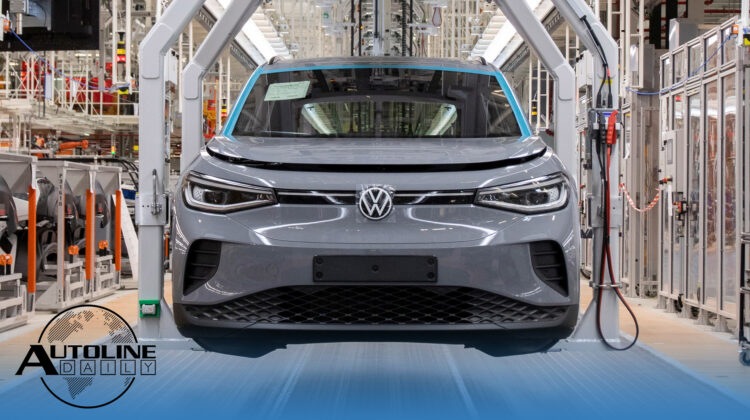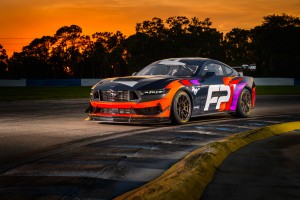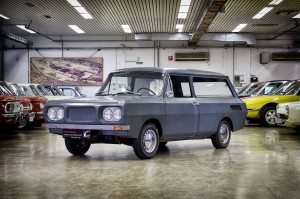
Listen to “AD #3599 – Ford Cut 1,000 More Jobs; VW Overestimated EV Demand; Public Charging Needs a Lot More Investment” on Spreaker.
Follow us on social media:
Runtime: 10:02
0:00 Ford Cut 1,000 More Jobs
0:59 Push Back on the EPA’s Emission Targets
1:42 Chinese an Even Bigger Threat to Japanese Industry
3:36 VW Overestimated Demand for Its EVs
4:38 Ford Reveals Mustang GT4
5:29 Ford Helps Helps Cure Accident PTSD
6:14 Not Enough Money Committed to Public Charging
7:23 NSU Importer Went Rogue to Make Its Own Station Wagon
Visit our sponsors to thank them for their support of Autoline Daily: Bridgestone, Intrepid Control Systems, and Schaeffler.
This is Autoline Daily, the show dedicated to enthusiasts of the global automotive industry.
FORD CUT 1,000 JOBS
Last week we reported that Ford is planning to lay off more salaried employees but it wasn’t known at the time how many employees it was planning to let go. But now we know. A source told the Detroit Free Press that the company laid off around 1,000 white collar workers, mostly engineers, across all of its divisions, that includes its EV, ICE and commercial businesses. Ford says it’s providing severance benefits and assistance to find new jobs outside of the company for the workers it laid off. Ford is trimming its head count in order to cut costs. It laid off 3,000 salaried workers in the U.S. last year and another 3,800 more in Europe a few months back. Ford is aiming to save $3 billion annually by the middle of the decade.
PUSH BACK ON THE EPA’S EMISSION TARGETS
Automakers are pushing back against stricter emission rules in the U.S. The Alliance for Automotive Innovation, a lobbying group which represents the auto industry, plans to file comments to the EPA criticizing its emissions proposal. The agency wants to limit carbon dioxide emissions from vehicles to 82 grams per mile by 2032. And they’ll ensure that around two-thirds of new car sales will be EVs by that time. But the Alliance says the cap isn’t reasonable or achievable within that timeframe. And it says it will result in fewer choices for buyers and higher prices.
CHINESE THREATEN JAPANESE INDUSTRY EVEN MORE
Chinese automaker Wuling, builder of the very popular MINI EV, is launching a new commercial NEV brand, called LINXYS. It will make both hybrid and electric vehicles and says they’ll come in sizes from micro- to large-sized trucks. Its first model looks like a decent sized truck, a hybrid with a 163 horsepower Atkinson cycle engine and a starting price around $12,000-$13,000. LINXYS hopes to sell a million commercial NEVs a year by 2030. But what we find most interesting is that only half of those sales are expected in its home market, the rest will come from outside of China. And Japan could be a popular landing spot. Foreign automakers have never really sold a lot of vehicles in Japan, but because Japanese automakers aren’t building very many EVs right now, it’s left the door open for the Chinese to swoop in. BYD already cracked the fortress this year and has more models on the way. And now Chinese automakers are making electric versions of the kinds of small commercial vehicles that are very popular in Japan. So, we’d say the threat to the entire Japanese auto industry is only growing.
VW OVERESTIMATED DEMAND FOR ITS EVs
Uh-oh, this isn’t a good sign for Volkswagen. The company is investing billions to transition to an all-electric lineup but now its scaling back EV production at one of its plants in Germany because demand isn’t where it expected. In an interview with a German newspaper, the head of the work council at its Emden plant said the company is canceling a shift for the next two weeks, which leads into a four-week summer shutdown for EV line workers. This will affect production of the ID.4 and ID.7. The plant also produces ICE models which will be unaffected. VW is cutting EV production because demand is 30% below its original planned production figures. And the ID.7, which was scheduled to start running down the line in July, has now been delayed until “later this year.” VW produces EVs at three other plants in Germany.
FORD REVEALS MUSTANG GT4
Ford revealed the new Mustang GT4 race car. Like the Mustang GT3, the GT4 is based on the all-new Mustang Dark Horse and is being built in partnership with Canadian racing specialist Multimatic, which also makes the Ford GT. The GT4 is powered by a Coyote-based 5.0L V8 engine that was developed in-house by Ford Performance. But the company didn’t share any of its performance numbers. Other features include, Multimatic DSSV dampers, paddle shifters with pneumatic actuation, Holinger dog-ring gearbox, natural fiber body panels and a unique aero package. The Mustang GT4 will compete globally starting next year.
FORD HELPS CURE ACCIDENT PTSD WITH SIMULATOR
In other Ford news, the automaker is helping people get back behind the wheel of a car after a bad accident. It’s using an adapted race simulator to train and retrain patients at a paraplegic hospital in Spain. The simulator features the same kind of hand controls they’ll use in a real vehicle, but this allows them to get used to the controls while operating in a virtual environment. Sometimes those patients are there because of a car crash and they might also be scared to get behind the wheel again. And this could be a tool for helping people like that ease back into driving. I think it sounds like an interesting concept that seems like it would be pretty easy to adopt almost anywhere.
NOT ENOUGH MONEY COMMITTED TO PUBLIC CHARGING
President Biden set a goal of having half a million public EV chargers built by 2030. But the U.S. needs significantly more chargers and investment to support the millions of EVs expected on the road by the end of the decade. According to a study from the National Renewable Energy Laboratory, which is part of the Energy Department, the U.S. will need 28 million charging ports to handle 33 million EVs on the road by 2030. That includes both private and public chargers. The study says the U.S. needs 182,000 fast chargers along highways, 1 million Level 2 public chargers and 26.8 million Level 1 and 2 chargers installed at private homes and workplaces. And that will require a significant investment of $53 to $127 billion by 2030. Currently, only about $24 billion in public and private investment has been committed to building public chargers.
NSU IMPORTER WENT ROGUE TO MAKE ITS OWN STATION WAGON
I love learning about cars I’ve never heard of before, so I hope you think this is as cool as me. NSU, which is one of the brands represented in the four rings of Audi, is celebrating its 150th anniversary and as part of the festivities Audi is highlighting NSU’s history in a 10-part series. In the 4th episode it’s taking a look at a very rare model, called the NSU P6 and P10. It was made in the late 60’s and early 70’s in South America by an importer of NSU cars that was operating on its own authority. That’s why it looks nothing like Prinz 1000 that it’s based on or any other NSU car of that time. The straight line body panels likely made it much easier to manufacture and because of the body changes the engine didn’t fit under the hood, so it’s mounted in the back, which means there’s almost no cargo space.
And before we go, don’t forget to tune into Autoline After Hours this afternoon. I will be making my hosting debut, don’t worry or get too excited, it’s just for this week while John and Gary are out. I’m bringing on a pioneer in EV repair and training. People always say that EVs need a lot less repair work, but I want to find out how true that really is. And we should get some great insight into Tesla repair. Also joining me on the show are Dan Neil from the Wall Street Journal and Sam Fiorani from Autoforecast Solutions. Tune in live today at 3PM EST.
Thanks to our partner for embedding Autoline Daily on its website: WardsAuto.com
Seamus and Sean McElroy cover the latest news in the automotive industry for Autoline Daily.










